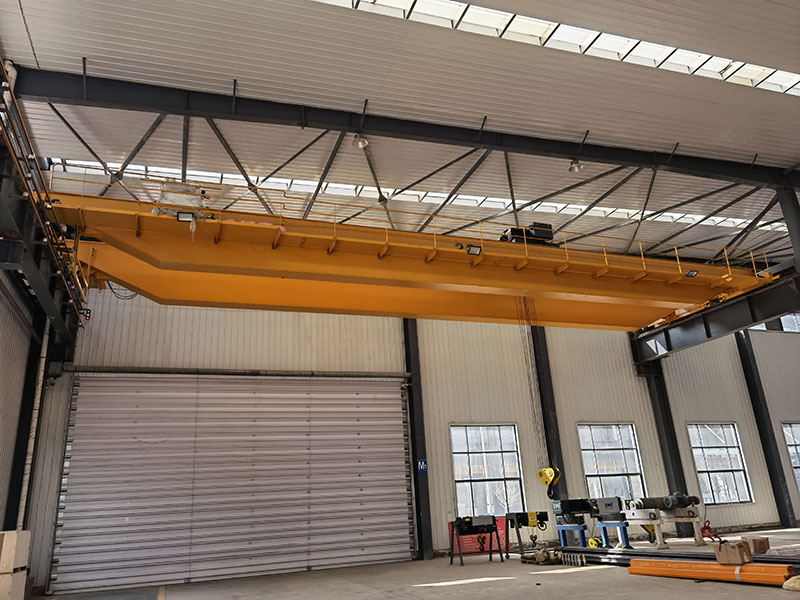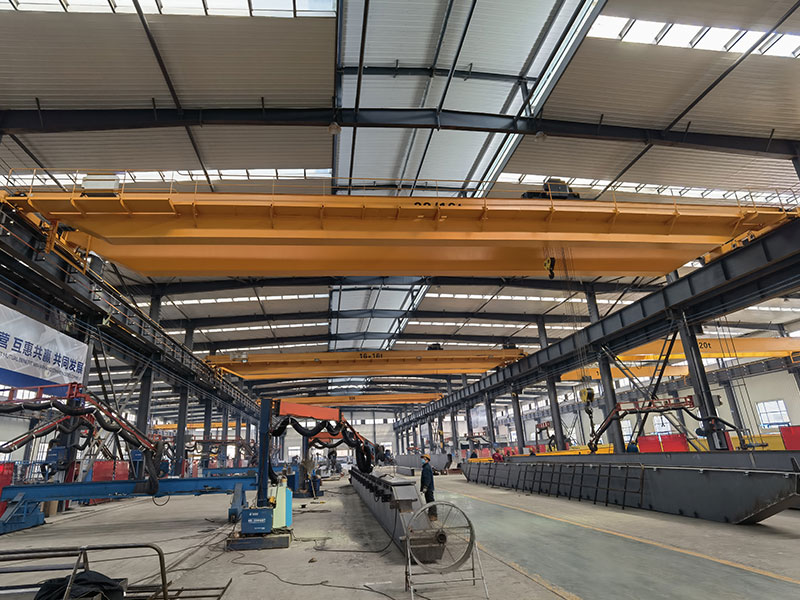When it comes to the design and functionality of a 30-ton bridge crane, the column and support beams are among the most important components that ensure the crane’s stability, safety, and capacity to perform its intended tasks. These structural elements are crucial for carrying and distributing the immense loads that the crane is designed to lift and transport. In this article, we will explore the vital roles that the column and support beams play in 30-ton bridge crane design, how they contribute to the crane’s operational efficiency, and the factors engineers consider when designing and maintaining these elements.

What Are Columns and Support Beams in a Bridge Crane?
In the context of a 30 ton bridge crane, the column and support beams are the vertical and horizontal structural components that provide the necessary stability to the crane. The column is the vertical supporting structure that typically anchors the crane to the ground or building foundation. It carries the entire weight of the crane and its load, ensuring that the forces generated during lifting operations are transferred to the ground.
The support beams, on the other hand, are horizontal structural elements designed to provide additional support and strength to the crane’s framework. They are positioned between the columns and are critical in distributing the forces applied during crane operation evenly across the structure. These beams support the crane’s bridge and other moving parts, allowing the crane to function smoothly and safely.
Together, columns and support beams form the foundation of the crane, ensuring that all load-bearing forces are efficiently managed, distributed, and transferred to the ground.

The Role of the Column and Support Beams in Stability
The primary function of the column and support beams in a 30-ton bridge crane is to provide the structural stability necessary for safe and efficient lifting operations. When lifting heavy loads, especially up to 30 tons, the crane experiences considerable forces, including tension, compression, and shear. The column and support beams must be designed to withstand these forces and prevent structural failure.
1. Load Distribution
The crane’s lifting capacity depends on how well the load is distributed across the entire structure. When a heavy load is lifted by the hoist, the forces are transferred through the crane’s hoisting mechanism, the bridge, and eventually down to the columns and support beams. The columns bear the vertical load of the bridge crane and its cargo, while the support beams help to distribute horizontal forces, such as those generated by the movement of the hoist and trolley.
If the column and support beams are inadequately designed or improperly aligned, the weight distribution can become uneven, leading to excessive stress on certain areas of the crane. This can result in deformation, excessive wear, or even failure of critical components. To prevent such issues, careful attention must be paid to the design of these elements to ensure that forces are distributed evenly, allowing the crane to operate at its full 30-ton capacity safely.
2. Preventing Structural Deformation
Columns and support beams help in preventing deformation or warping of the crane structure under heavy loads. Over time, heavy lifting operations can cause material fatigue in the crane’s components, leading to bending or stretching. If the columns and support beams are not strong enough, they may fail to counteract these forces, leading to a loss of structural integrity. This is especially crucial for cranes lifting loads up to 30 tons, as they are exposed to greater stresses compared to smaller capacity cranes.
By using high-strength materials such as steel, the columns and support beams ensure that the crane can withstand continuous operations without undergoing deformation. Properly designed beams and columns allow the crane to maintain its shape and function, even when subjected to the significant forces involved in heavy-duty lifting.
How Column and Support Beams Contribute to Crane Safety
Safety is one of the most critical aspects of crane operation, particularly when dealing with heavy loads like 30 tons. The column and support beams play an essential role in preventing accidents or malfunctions during lifting operations. Their strength and design directly impact the safety of the crane and its operators.
1. Reducing Risk of Crane Collapse
The most obvious safety concern for any crane is the risk of collapse. Without properly designed and implemented columns and support beams, the crane may become unstable under load. This could lead to catastrophic failure, endangering both the crane operator and surrounding workers.
Columns are typically designed with safety factors that take into account not only the expected load but also factors like wind, seismic activity, and environmental conditions. These safety margins ensure that the crane can operate safely even in challenging conditions. Support beams also contribute to stability by preventing swaying or twisting of the crane during movement, which could potentially lead to tipping or other dangerous situations.
2. Ensuring Proper Alignment
Proper alignment of the columns and support beams is essential for smooth crane operation. If these elements are misaligned, they can cause the crane to function inefficiently or even dangerously. For example, a misaligned column could lead to uneven load distribution, causing the crane to tip over or apply uneven pressure to the lifting mechanism.
The alignment of the support beams is equally important, as any deviation can lead to instability during lifting or traveling operations. Engineers carefully ensure that the crane’s structural components are perfectly aligned during both the design and installation stages to prevent operational problems or accidents down the line.
3. Reducing Wear and Tear on Other Components
Columns and support beams also contribute to reducing wear and tear on other components of the 30 ton double girder bridge crane, such as the trolley, hoist, and rails. These components are responsible for moving the load across the crane’s span, and if they are subjected to uneven forces, they can wear out prematurely. By distributing the load evenly across the structure, the columns and support beams help reduce stress on these critical parts, extending their lifespan and improving the overall efficiency of the crane.
Considerations in Designing Columns and Support Beams for a 30-Ton Bridge Crane
Designing the columns and support beams for a 30-ton bridge crane requires careful consideration of various factors to ensure the crane can safely and efficiently perform its intended lifting tasks. These factors include:
1. Material Selection
Columns and support beams must be made from materials that can withstand the high loads generated by lifting 30 tons. Steel is the most commonly used material for these components due to its high tensile strength, durability, and ability to withstand extreme stresses. The material must also have good resistance to environmental factors such as corrosion, which could weaken the crane structure over time.
2. Structural Shape and Size
The shape and size of the columns and support beams must be designed to carry the anticipated loads without bending or breaking. Columns are usually cylindrical or rectangular, and their size depends on the load they need to carry. Support beams, often I-beams or box beams, are designed to provide maximum strength with minimum material weight. Both must be sized and shaped to ensure that they are efficient in terms of material use and strength.
3. Safety Margins and Load Factors
In designing the columns and support beams, engineers must account for various load factors, including dynamic loads (e.g., load movement and lifting), environmental conditions (e.g., wind or seismic forces), and operational uncertainties. The crane’s design will include safety margins to ensure that the columns and support beams are able to handle unforeseen stresses or operating conditions without failure.
4. Foundation and Installation
Proper installation of the columns and support beams is essential for ensuring that they can carry the full 30-ton lifting capacity. The foundation on which the crane sits must be able to support the weight of the industrial bridge crane and any loads lifted by it. Additionally, the installation process must ensure that the columns are perfectly vertical and that the support beams are correctly aligned to prevent operational issues.
Conclusion
The column and support beams in a 30-ton bridge crane are fundamental to ensuring the crane’s ability to lift and move heavy loads safely and efficiently. These components play a critical role in providing stability, preventing deformation, reducing the risk of collapse, and ensuring safety during operation. By using the appropriate materials, designing the elements for maximum strength, and carefully installing them, engineers can ensure that the crane can perform its tasks effectively and without risk of failure. Proper maintenance and inspection of these structural components are also essential to keeping the crane in good working condition and extending its operational lifespan.